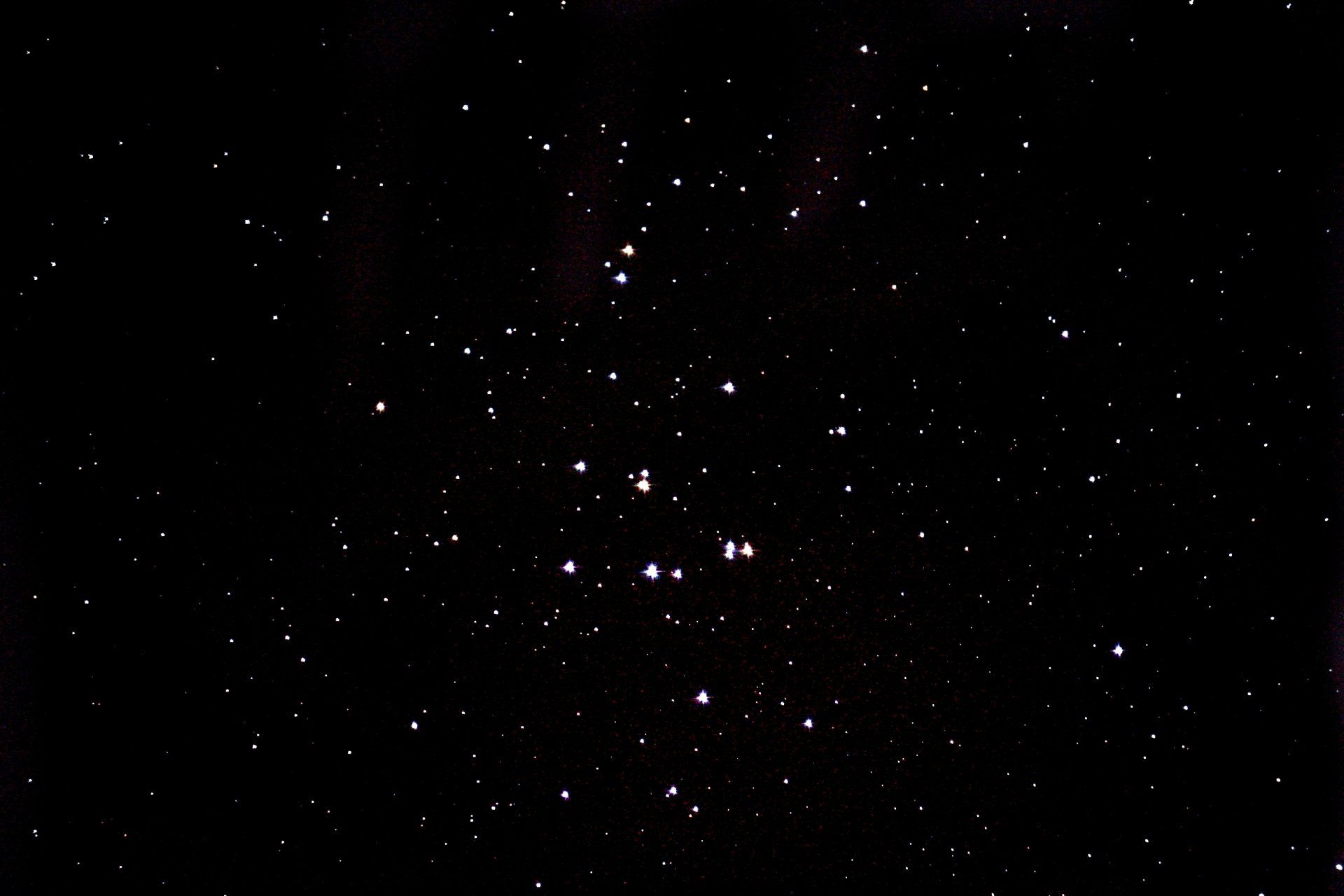M44
The Beehive Cluster (also known as Praesepe (Latin for "manger"), M44, NGC 2632, or Cr 189), is an open cluster in the constellation Cancer. It is one of the nearest open clusters to Earth, containing a larger population of stars than other nearby bright open clusters. Under dark skies, the Beehive Cluster looks like a small nebulous object to the naked eye; as known since ancient times. Classical astronomer Ptolemy described it as "nebulous mass in the breast of Cancer", and it was among the first objects that Galileo studied with his telescope.
Age and proper motion coincide with those of the Hyades, suggesting they may share similar origins. Both clusters also contain red giants and white dwarfs, which represent later stages of stellar evolution, along with many main sequence stars.
Distance to M44 is often cited to be between 160 and 187 parsecs (520-610 light years)., but the revised Hipparcos parallaxes (2009) for Praesepe members and the latest infrared color-magnitude diagram favors an analogous distance of 182 pc. There is better age estimates of around 600 million years old, equivalent to about 625 million years for the Hyades. The bright inner cluster core's diameter is about 7.0 parsecs (23 light years).
Observationally, the Beehive is easily visible to the naked eye as a small nebulous cloud when Cancer culminates in the early evening each year from February to May. At 1.5° across, the cluster easily fits within the field of view of binoculars or low powered small telescopes.
